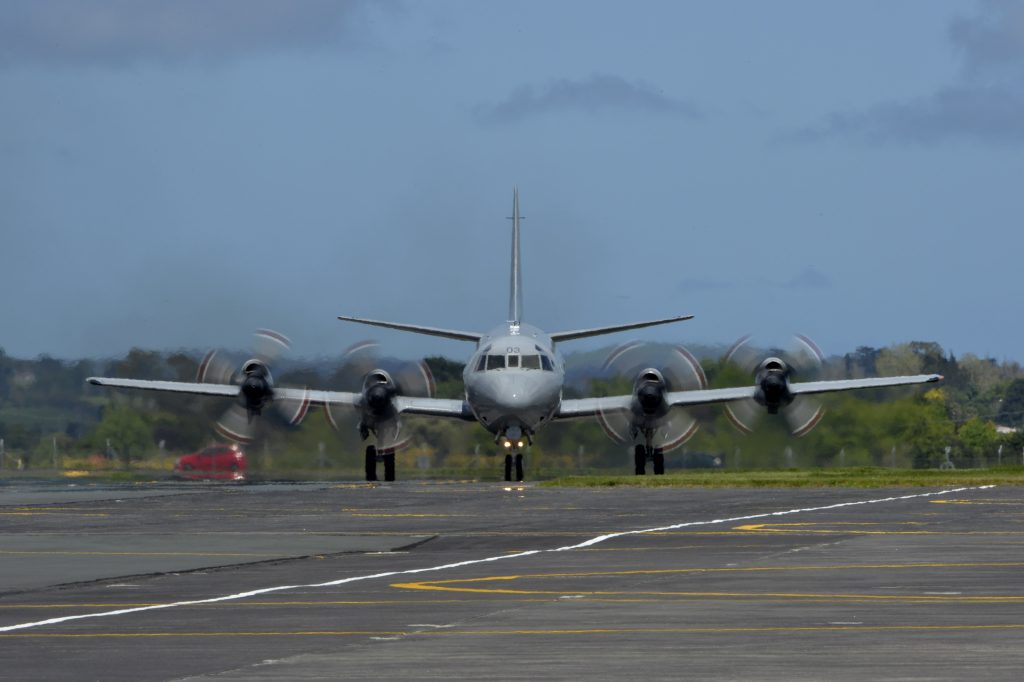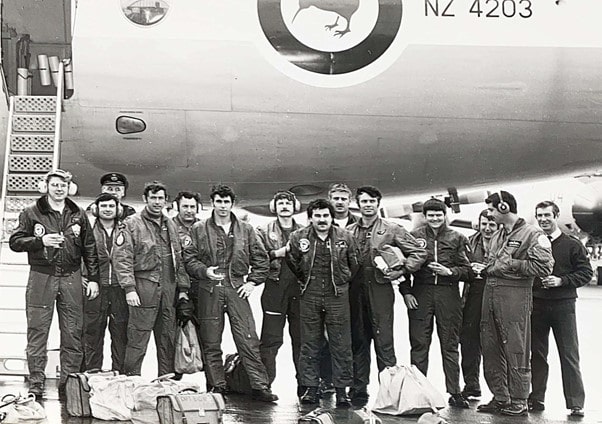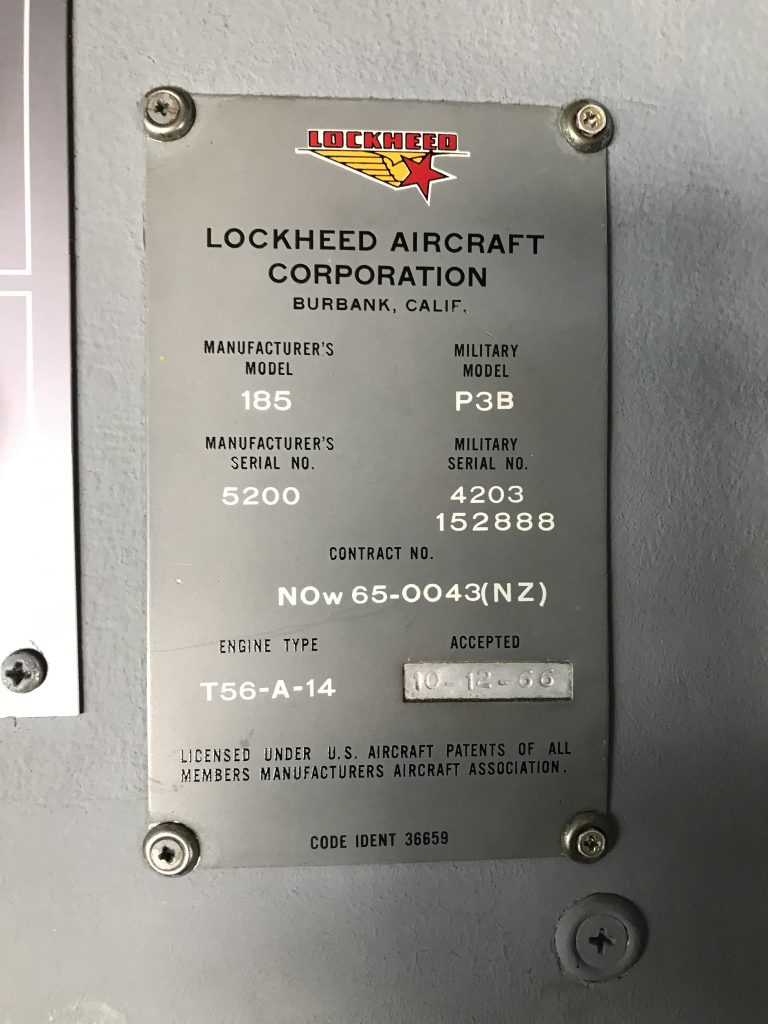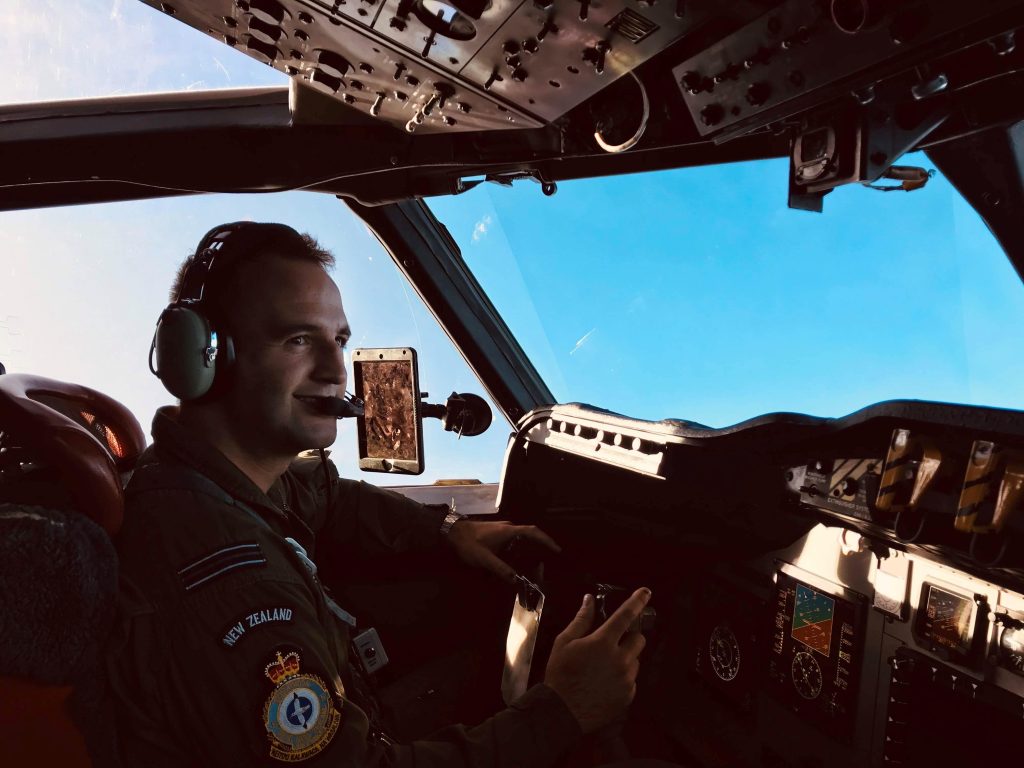
The Air Force Museum of New Zealand is about to add NZ4203, a Lockheed P-3K2 Orion, to its collection.
So, we thought we’d talk to two pilots – one who was at the controls of NZ4203 on her delivery flight and another who flew her at the end of her career – about what made NZ4203 so special.

Rick Bulger – NZ4203 was simply a joy to fly
Group Captain (retired) Rick Bulger first flew NZ4203 on his conversion course in early October 1966 and was the copilot on her delivery flight from the United States in early December the same year.
He flew Orions for 21 years on countless missions all over the world and has more than 6000 hours on the type. When he retired, he did not want to fly anything else.
He’s delighted the Air Force Museum is adding NZ4203 to its collection – the Orion with the most hours of service and an incredible record.
In what way were they different to fly than other types?
You have to bear in mind that in 1966 when we were first training on the Orions at NAS Moffett Field, California, we were ex-Sunderland crews – so the difference was enormous.
We were moving from 1940s technology to the latest and greatest, and the P3s were unlike anything we had experienced before.
They were just so fast for those days. A P3’s takeoff speed at a training weight was 115 knots – about the same as a heavy weight Sunderland cruising speed. There was just no comparison.
We thought they were stunning and couldn’t wait to fly them, and as it turned out, they were in every way a pilot’s dream aircraft.
They were over-powered with 5200 shaft horsepower available from the engine, but an airframe that was only rated for 4600 shaft horsepower, so they always had an enormous amount of reserve power that could be used as one climbed into cooler temperatures. The engines were constant speed units and were extremely responsive to power lever movement. The acceleration one could get from a standing start was enormous.

What was the most difficult thing to learn?
Because they had a low drag wing, they landed a lot faster than we were used to and braking was an interesting evolution as there was no anti-skid!
What was your longest flight?
We did a lot of 12 hour plus missions – up to 14 hours was not unusual.
I really enjoyed anti-submarine warfare sorties (and they probably ruined me for any other flying) – I never wanted to move to commercial flying for example.
It was the height of the Cold War, and we spent a lot of time on ASW sorties chasing both conventional and nuclear boats which was rather like playing three-dimensional chess, but with deadly purpose.
On patrols we routinely shut down one engine for fuel conservation, and when the weight decreased as we burnt off fuel, we could then shut down a second, and we would get home with plenty of reserve.
Any memorable incidents?
Plenty! One Friday night I made a bet with an experienced Iroquois pilot that we would be faster to 1000 feet than his helicopter – and he took the bet. When he got a chance to fly with us, we were able to do a short field, max power take off with a low fuel load at the end of a training flight. The acceleration of the aircraft, as I mentioned, was enormous and we rocketed through 1000 within seconds of the start of the takeoff roll. We won the bet hands down!
There were a lot of search and rescue missions – including three days of a succession of Orions circling a life raft from a yacht that had hit a whale at night coming back from Fiji. I will never forget how grateful they were when we dropped a radio to them, and they could both talk to us and hear us overhead. When we would leave periodically to check on the progress of their rescue ship, they got quite tetchy! The sound of our engines was incredibly reassuring for them.
Do you wish NZ4203 a happy retirement?
Absolutely I do! I am delighted you got that airframe as it has the most hours of all of them. I flew so many hours on that airframe that I had, and have, a real soft spot for her. Having said that, I was thinking the other day that I flew the aircraft for 20+ years which is a lot – but still less than half of what would be her eventual service life of 54 years. That is an incredible amount of faultless service.
She will always be my favourite, just a beautiful aircraft in every way – capable, powerful, responsive – simply a joy to fly.

NZ4203 was the first P-3K2 Flight Lieutenant Andrew Sunde flew, but he also worked on the aircraft as an avionics technician before becoming a pilot.
With seven years’ service in total on the type, including 1500 hours as a pilot and co-pilot in deployments to the Middle East, Southeast Asia, Japan, and all around the Pacific, he took time out to talk about the ‘absolute privilege’ of flying an Orion.
In what way were they different to fly than other types?
The P-3 was an aircraft from the golden age of aviation. Crews were expected to know how they worked, how things could go wrong, and you were surrounded by all the history. Flying was more of an adventure, and the aircraft gave you the sense that if you took care of it, you could expect it to take you anywhere. The P-3 was great to hand fly – it had plenty of excess power (especially if it was lightweight), could easily handle turns up to 60 degrees angle of bank, and if you talk to the right people even some gentle aerobatics. When you powered up the cockpit in the morning and the engineers pushed the start buttons for the engines, it really felt like you were taking a classic V8 car out for a drive.

What was the most difficult thing to learn?
The inner workings of the four-blade constant speed Hamilton propellers! Even with the faded 1960s wall diagrams, the Service Digest magazines, and the decades of ‘gouge’ (general knowledge) you were no match for the ability of most flight engineers to come up with yet another imaginative in-flight scenario to test your knowledge. The P3 came from an era where the mechanical complexity of everything was still expected to be understood by those operating it – and most of the flight engineers who’d been around the P3 for 30+ years could pull it apart and put it back together in their sleep.
What was your longest flight?
In my logbook I have a couple of 11-hour flights – one for a SAR out near Tonga waiting overhead for the survivors to be picked up by a ship, and the other for a long-combined warfare mission in the South China Sea during an exercise. On both of these flights we had an engine shut down to conserve fuel.
Any memorable incidents?
Many – but I can’t talk about the best ones unfortunately! There was one mission in the Middle East which I remember for the view. Normally the visibility in the Arabian Gulf was awful with haze, dust, and the humid air restricting visibility to less than a few miles. One morning patrol however we climbed out over the Gulf to an exceptional day – we could see over 100 miles inland. Never before had I appreciated the barren rugged mountain ranges, contrasted between the blue sea full of ships and boats of all sizes and types, and the bright sandy coast. A scene you just are not used to from this part of the world!
Did it feel like a 50-year-old aircraft?
Yes and no. The mission systems kept up to date with the technology of the day, so the back end of the aircraft was cutting edge. But the technology was fitted to an aircraft that once used the stars for long range navigation and found ships using an old green screen radar and binoculars. Up in the cockpit, we had modern glass cockpit instruments, but your hands were still on the controls of engines and systems that had not changed since the 60s. Some of the reminders that it was old was the pencil sharpener, the ash trays, and the fact you could open the door in flight and throw almost anything out.
Were there any quirks?
Sure! It never had antiskid brakes – which is unusual for an aircraft that size. But we never used them as the propellers were powerful enough in reverse which meant you could land, taxi back in, and only touch the brakes to put the park brake on. This was something we aspired to as new pilots on the aircraft. In reality it also meant that if reverse thrust wasn’t available or the runway was wet and slippery, controlling the speed without bursting a tire might have been hard work. The wheels would lock up quickly.
Do you remember anything special about NZ4203?
It was the first P-3 that I flew. It was also the aircraft I flew the most during the Middle East deployment, and we took her to help with the rescue of a solo sailor in 2019 who had lost steering hundreds of miles south of Rarotonga.
Do you wish NZ4203 a happy retirement?
Absolutely – she has served far more time than we ever expected, and I think it’ll be great that she can continue to inspire future aviators or remind people of the golden age. While the P8 is a step up in speed and reliability, it won’t achieve any better results than this old girl on her final mission. She kept up.




